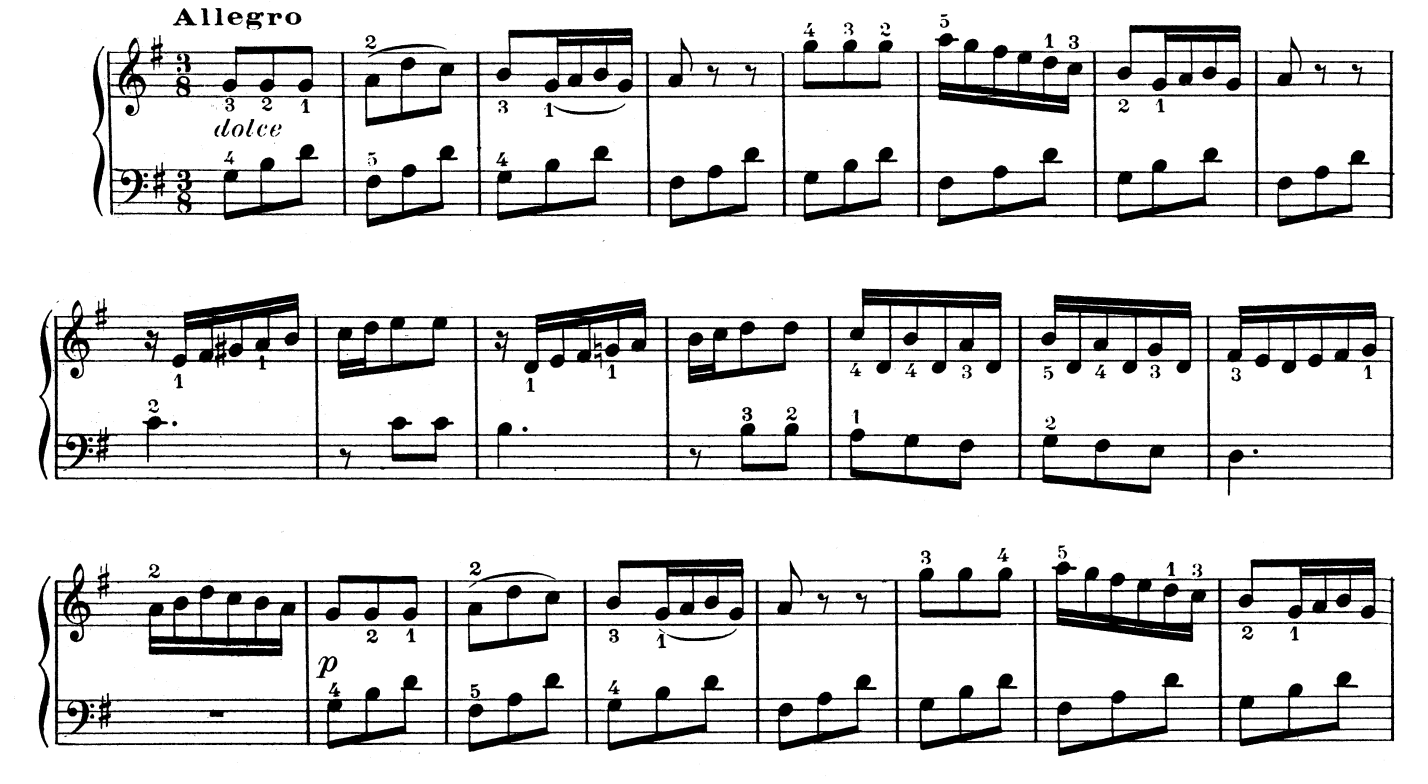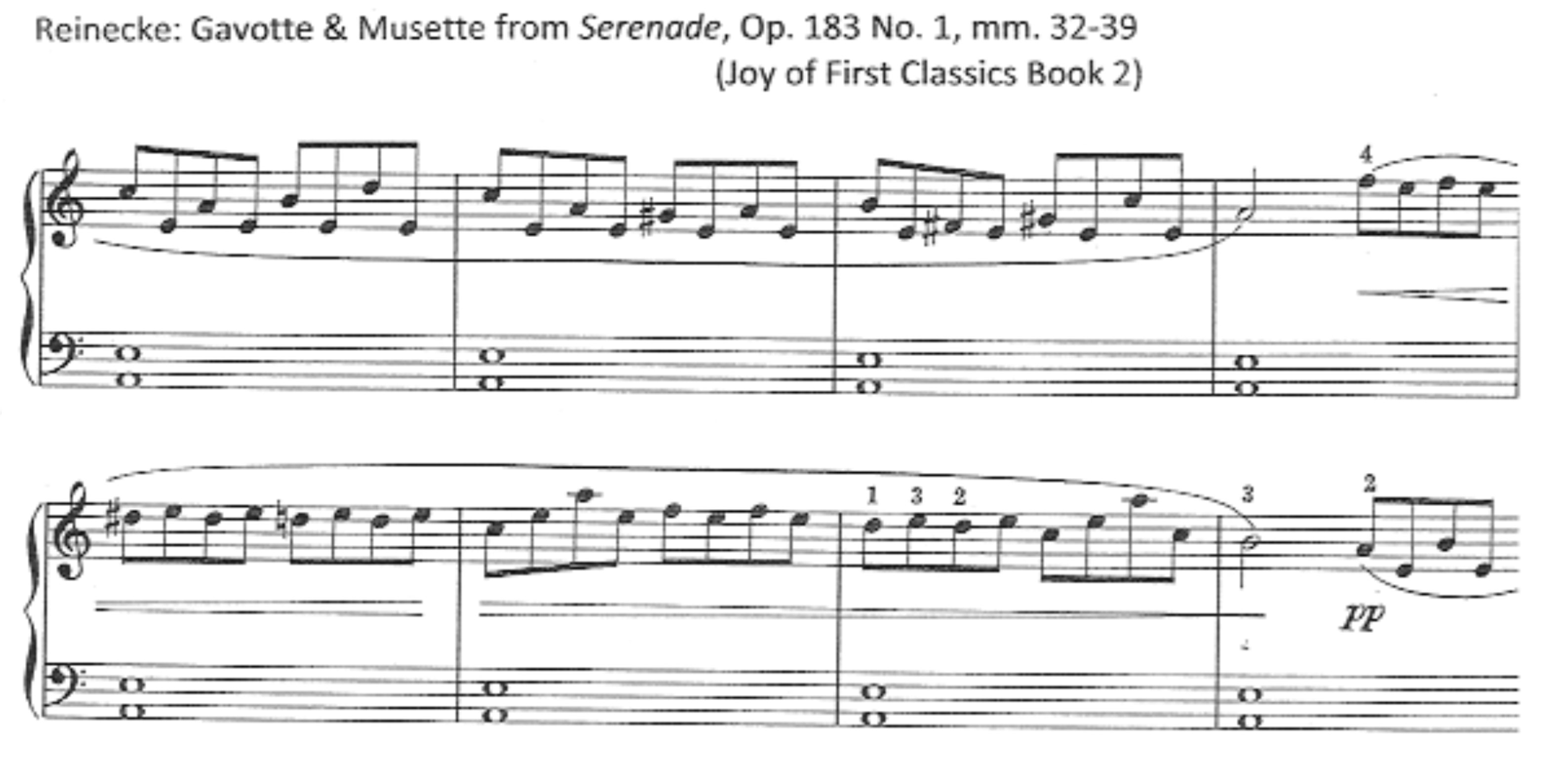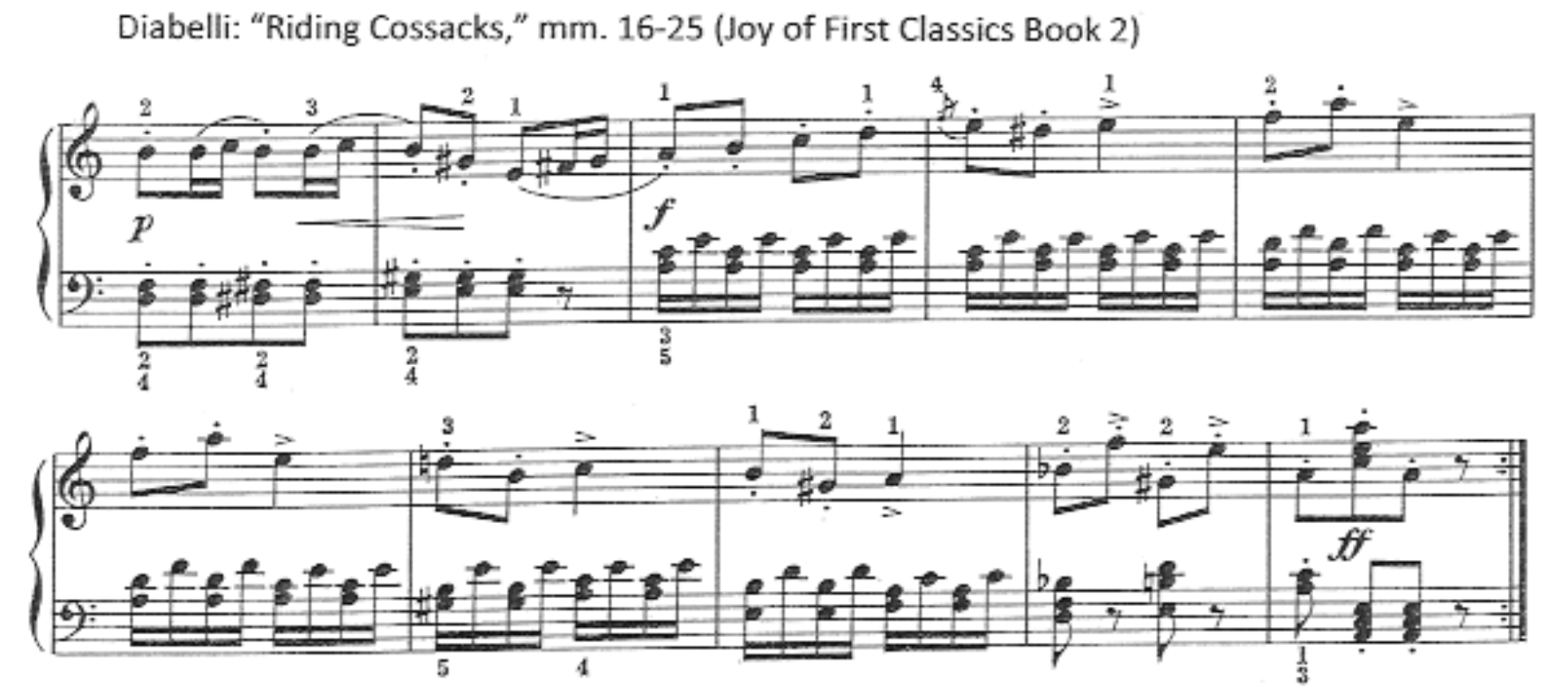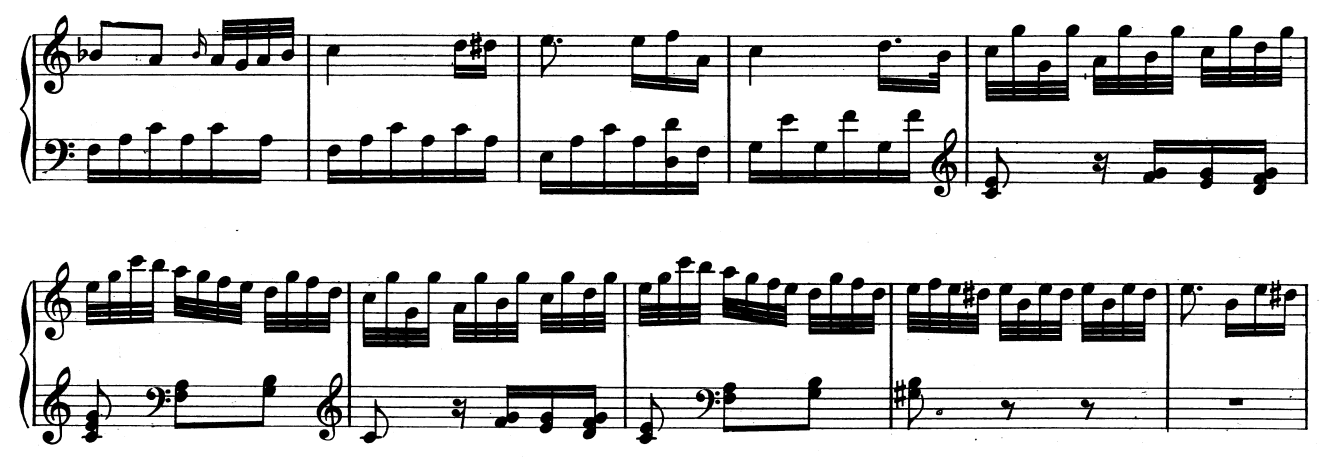- Home >
- Foundations in Piano Technique >
- Trills and Tremolos >
- Repertoire Examples (8.3)
Trills and Tremolos
Repertoire Examples (8.3)

Clementi: Sonatina in G, Op. 36 No. 2 iii
- Experiment with the different fingering options offered for mm. 13-14 with the tremolo figures that begin from the top note. Create a cycling, three-dimensional shape that spans one measure at a time, rather than merely playing with fingers alone.
- Similarly, experiment with three-dimensional shaping and rotation while practising mm. 49-52. Especially note the difference when using rotation alone (two notes at a time) as opposed to integrating with three-dimensional shaping (six notes at a time) in mm. 50 and 52.
- Practise the left hand alone for mm. 53-54, again cycling once per measure.
- Note the coordination needed for m. 54 to play the left-hand tremolo and right-hand trill simultaneously.

Reinecke: Gavotte and Musette
- Practise the top notes alone, portato, keeping your hand ‘small,’ to sense how you wish to voice and expressively shape the melody.
- Then play as written, using three-dimensional shaping while playing the tremolo and trill figures while sensitively projecting the top melody.

Diabelli: Ride of the Cossacks
- Isolate the left-hand tremolos in mm. 18-23 and practise different tremolo pairs by selecting either the lower or upper note of the dyad (e.g., A and C in m. 18) versus the thumb’s sixteenth note (E in m. 18). Thus, begin with AEAE in m. 18 and continue with the lower note of the dyad (usually the 5th finger) through m. 23. Then repeat the passage, beginning CECE in m. 18 and continuing through m. 23 with the upper note of the dyad.
- Sense the subtle three-dimensional shaping combined with rotation that facilitates integrated movement over an entire measure, rather than one eighth-note at a time.
- Practise the marked accents with slight agogic space and a rhythmic attack to add more character to the music!

Beethoven: Für Elise
- Practise the lower notes of the right-hand tremolo in m. 31 alone, portato, using three-dimensional shaping.
- Play the passage as written, combining three-dimensional shaping with rotation, as demonstrated in the video.

Grieg: Elfin Dance, Op. 12 No. 4
- Isolate the first five chords in mm. 1-2 by combining a focused fingertip staccato touch with a three-dimensional, cycling vibrato motion. Practice hands alone and together, paying special attention to moving voices that govern harmonic changes.
- Isolate mm. 7-8, hands alone. Carefully line up the dyads on the main beats of the right hand’s tremolo and combine rotation with three-dimensional shaping. Also carefully observe the composer’s articulation and use a rhythmic attack to play the sforzando on the downbeat of m. 8 with slight agogic space.
- Play the outline of the right hand’s melody in mm. 19-20 as demonstrated by omitting the A-sharps. Then play the tremolo figure as written by combining rotation with a small vibratory movement, forward, as demonstrated.
- Isolate the quick jumps in mm. 21-23 and similar spots by practising covering the E’s in mm. 18 and 22 before you need to sound the note.
- Remember to also incorporate slow practice of passages like these while still using three-dimensional shaping and grouping both hands in larger gestures, once per measure.
Purchase options
This content is available as a separate, once-off purchase from our store via the following products:
